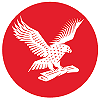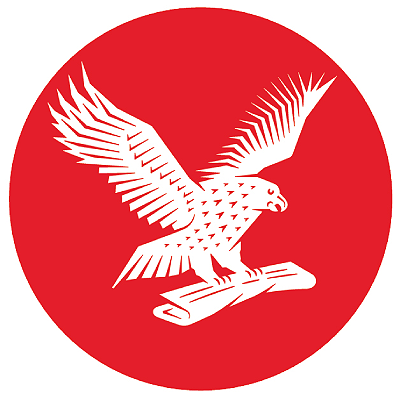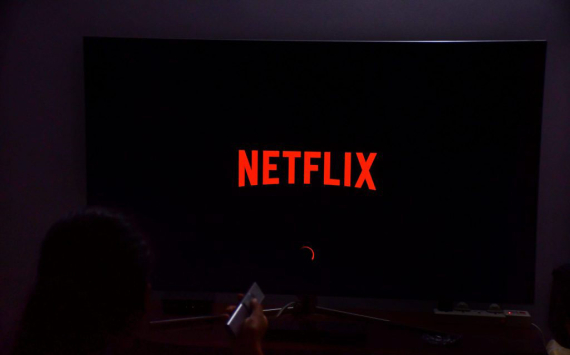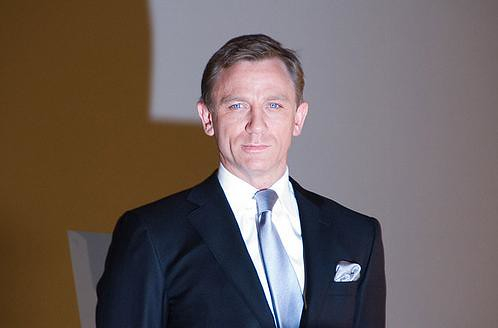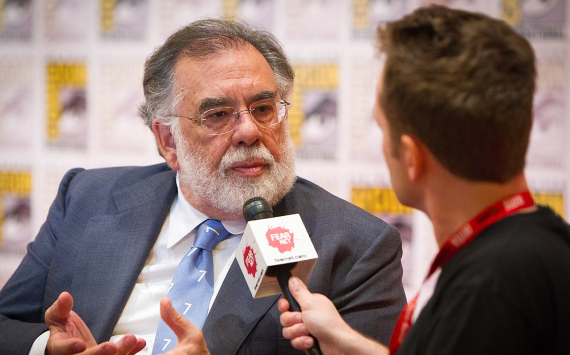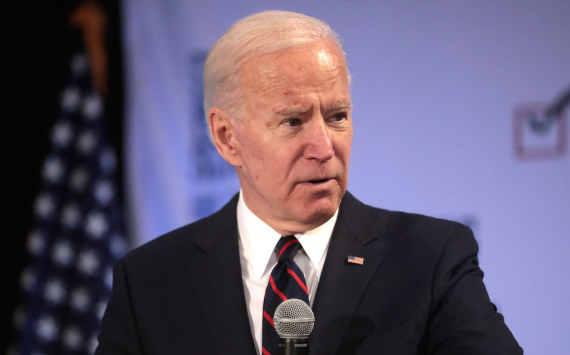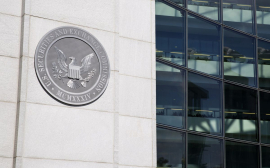Description
The Independent is a British newspaper that was established in 1986 as a national morning printed paper and is now an online newspaper only. Nicknamed the Indy, it began as a broadsheet and changed to tabloid format in 2003. The last printed edition was published on Saturday 26 March 2016, leaving only the online edition.
It tends to take a pro-market stance on economic issues. The newspaper was controlled by Tony O'Reilly's Irish Independent News & Media from 1997 until it was sold to the Russian oligarch and former KGB Officer Alexander Lebedev in 2010. In 2017, a Saudi Arabian investor bought a 30% stake in it.
In June 2015, the newspaper had an average daily circulation of just below 58,000, 85% down from its 1990 peak, while the Sunday edition had a circulation of just over 97,000. The daily edition was named National Newspaper of the Year at the 2004 British Press Awards. The website and mobile app have a combined monthly reach of 22,939,000.
History
1986 to 1990
Launched in 1986, the first issue of The Independent was published on 7 October in broadsheet format. It was produced by Newspaper Publishing plc and created by Andreas Whittam Smith, Stephen Glover and Matthew Symonds. All three partners were former journalists at The Daily Telegraph who had left the paper towards the end of Lord Hartwell's ownership. Marcus Sieff was the first chairman of Newspaper Publishing, and Whittam Smith took control of the paper.
The paper was created at a time of a fundamental change in British newspaper publishing. Rupert Murdoch was challenging long-accepted practices of the print unions and ultimately defeated them in the Wapping dispute. Consequently, production costs could be reduced which, it was said at the time, created openings for more competition. As a result of controversy around Murdoch's move to Wapping, the plant was effectively having to function under siege from sacked print workers picketing outside. The Independent attracted some of the staff from the two Murdoch broadsheets who had chosen not to move to his company's new headquarters. Launched with the advertising slogan "It is. Are you?", and challenging both The Guardian for centre-left readers and The Times as the newspaper of record, The Independent reached a circulation of over 400,000 by 1989.
Competing in a moribund market, The Independent sparked a general freshening of newspaper design as well as, within a few years, a price war in the market sector. When The Independent launched The Independent on Sunday in 1990, sales were less than anticipated, partly due to the launch of the Sunday Correspondent four months prior, although this direct rival closed at the end of November 1990. Some aspects of production merged with the main paper, although the Sunday paper retained a largely distinct editorial staff.
1990–1999
In the 1990s, The Independent was faced with price cutting by the Murdoch titles, and started an advertising campaign accusing The Times and The Daily Telegraph of reflecting the views of their proprietors, Rupert Murdoch and Conrad Black. It featured spoofs of the other papers' mastheads with the words The Rupert Murdoch or The Conrad Black, with The Independent below the main title.
Newspaper Publishing had financial problems. A number of other media companies were interested in the paper. Tony O'Reilly's media group and Mirror Group Newspapers (MGN) had bought a stake of about a third each by mid-1994. In March 1995, Newspaper Publishing was restructured with a rights issue, splitting the shareholding into O'Reilly's Independent News & Media (43%), MGN (43%), and Prisa (publisher of El País) (12%).
In April 1996, there was another refinancing, and in March 1998, O'Reilly bought the other shares of the company for £30 million, and assumed the company's debt. Brendan Hopkins headed Independent News, Andrew Marr was appointed editor of The Independent, and Rosie Boycott became editor of The Independent on Sunday. Marr introduced a dramatic if short-lived redesign which won critical favour but was a commercial failure, partly as a result of a limited promotional budget. Marr admitted his changes had been a mistake in his book, My Trade.
Boycott left in April 1998 to join the Daily Express, and Marr left in May 1998, later becoming the BBC's political editor. Simon Kelner was appointed as the editor. By this time the circulation had fallen below 200,000. Independent News spent heavily to increase circulation, and the paper went through several redesigns. While circulation increased, it did not approach the level which had been achieved in 1989, or restore profitability. Job cuts and financial controls reduced the morale of journalists and the quality of the product.
2000–2009
Ivan Fallon, on the board since 1995 and formerly a key figure at The Sunday Times, replaced Hopkins as head of Independent News & Media in July 2002. By mid-2004, the newspaper was losing £5 million per year. A gradual improvement meant that by 2006, circulation was at a nine-year high.
In November 2008, following further staff cuts, production was moved to Northcliffe House, in Kensington High Street, the headquarters of Associated Newspapers. The two newspaper groups' editorial, management and commercial operations remained separate, but they shared services including security, information technology, switchboard and payroll.
2010–2016
On 25 March 2010, Independent News & Media sold the newspaper to a new company owned by the family of Russian oligarch Alexander Lebedev for a nominal £1 fee and £9.25m over the next 10 months, choosing this option over closing The Independent and The Independent on Sunday, which would have cost £28m and £40m respectively, due to long-term contracts. Alexander's son Evgeny became Chairman of the new company, with Alexander becoming a board director. In 2009, Lebedev had bought a controlling stake in the London Evening Standard. Two weeks later, editor Roger Alton resigned.
In July 2011, The Independent's columnist Johann Hari was stripped of the Orwell Prize he had won in 2008 after claims, to which Hari later admitted, of plagiarism and inaccuracy. In January 2012, Chris Blackhurst, editor of The Independent, told the Leveson inquiry that the scandal had "severely damaged" the newspaper's reputation. He nevertheless told the inquiry that Hari would return as a columnist in "four to five weeks". Hari later announced that he would not return to The Independent. Jonathan Foreman contrasted The Independent's reaction to the scandal unfavourably with the reaction of American newspapers to similar incidents such as the Jayson Blair case, which led to resignations of editors, "deep soul-searching", and "new standards of exactitude being imposed". The historian Guy Walters suggested that Hari's fabrications had been an open secret amongst the newspaper's staff and that their internal inquiry was a "facesaving exercise". A proportion of articles are now behind a pay wall, that section is titled, 'Independent Minds'.
The Independent and The Independent on Sunday endorsed "Remain" in the Brexit referendum of 2016.
From 2016
In March 2016 The Independent decided to close its print edition and become an online newspaper; the last printed edition was published on Saturday 26 March 2016. The Independent on Sunday published its last print edition on 20 March 2016 and was closed following that.
Content
Format and design
The Independent began publishing as a broadsheet, in a series of celebrated designs. The final version was designed by Carroll, Dempsey and Thirkell following a commission by Nicholas Garland who, along with Alexander Chancellor, was unhappy with designs produced by Raymond Hawkey and Michael McGuiness – on seeing the proposed designs, Chancellor had said "I thought we were joining a serious paper". The first edition was designed and implemented by Michael Crozier, who was Executive Editor, Design and Picture, from pre-launch in 1986 to 1994.
From September 2003, the paper was produced in both broadsheet and tabloid-sized versions, with the same content in each. The tabloid edition was termed "compact" to distance itself from the more sensationalist reporting style usually associated with "tabloid" newspapers in the UK. After launching in the London area and then in North West England, the smaller format appeared gradually throughout the UK. Soon afterwards, Rupert Murdoch's Times followed suit, introducing its own tabloid-sized version. Prior to these changes, The Independent had a daily circulation of around 217,500, the lowest of any major national British daily, a figure that climbed by 15% as of March 2004 (to 250,000). Throughout much of 2006, circulation stagnated at a quarter of a million. On 14 May 2004, The Independent produced its last weekday broadsheet, having stopped producing a Saturday broadsheet edition in January. The Independent on Sunday published its last simultaneous broadsheet on 9 October 2005, and thereafter followed a compact design until the print edition was discontinued.
On 12 April 2005, The Independent redesigned its layout to a more European feel, similar to France's Libération. The redesign was carried out by a Barcelona-based design studio. The weekday second section was subsumed within the main paper, double-page feature articles became common in the main news sections, and there were revisions to the front and back covers. A new second section, "Extra", was introduced on 25 April 2006. It is similar to The Guardian's "G2" and The Times's "Times2", containing features, reportage and games, including sudoku. In June 2007, The Independent on Sunday consolidated its content into a news section which included sports and business, and a magazine focusing on life and culture. On 23 September 2008, the main newspaper became full-colour, and "Extra" was replaced by an "Independent Life Supplement" focusing on different themes each day.
Three weeks after the acquisition of the paper by Alexander Lebedev and Evgeny Lebedev in 2010, the paper was relaunched with another redesign on 20 April. The new format featured smaller headlines and a new pullout "Viewspaper" section, which contained the paper's comment and feature articles. From 26 October 2010, the same day as its sister paper, i, was launched, The Independent was printed on slightly thicker paper than before and ceased to be full-colour throughout, with many photographs and pictures (though none of those used in adverts) being printed in black and white only. On 11 October 2011, The Independent unveiled yet another new look, featuring a red, sans-serif masthead. In November 2013, the whole newspaper was overhauled again, including new custom fonts and a vertical masthead in black.
Front pages
Following the 2003 switch in format, The Independent became known for its unorthodox and campaigning front pages, which frequently relied on images, graphics or lists rather than traditional headlines and written news content. For example, following the Kashmir earthquake in 2005, it used its front page to urge its readers to donate to its appeal fund, and following the publication of the Hutton Report into the death of British government scientist David Kelly, its front page simply carried the word "Whitewash?" In 2003, the paper's editor, Simon Kelner, was named "Editor of the Year" at the What the Papers Say awards, partly in recognition of, according to the judges, his "often arresting and imaginative front-page designs". In 2008, however, as he was stepping down as editor, he stated that it was possible to "overdo the formula" and that the style of the paper's front pages perhaps needed "reinvention".
Under the subsequent editorship of Chris Blackhurst, the campaigning, poster-style front pages were scaled back in favour of more conventional news stories.
Sections
The weekday, Saturday and Sunday editions of The Independent all included supplements and pull-out subsections:
Daily (Monday to Friday) The Independent:
- "Monday Sport": A weekly pull-out containing reports of the previous weekend's sporting events.
Saturday's The Independent:
- "Saturday Sport": A weekly pull-out containing reports looking ahead to the weekend's sporting events.
- "Radar": A compact, primarily listings magazine, including television schedules, film and DVD reviews and events listings for the coming week. It also includes a round-up of the "50 best" items in a particular category. For example, over the Christmas period there are weekly supplements of "Gifts for him" and "Gifts for her".
- "Traveller": Contains travel articles and advertisements.
- "The Independent Magazine": A features magazine including sections on food, interiors and fashion.
The Independent on Sunday:
- "Sport": A weekly pull-out containing reports of Saturday's sporting events.
- "The New Review": A features magazine.
- "Arts & Books": A culture supplement.
- "Rainbow List" An annually-updated list, first published in 2000, then as the "Pink List", of the most famous and influential people who have declared themselves lesbian, gay, bisexual or transgender.
Online presence
On 23 January 2008, The Independent relaunched its online edition, www.independent.co.uk. The relaunched site introduced a new look, better access to the blog service, priority on image and video content, and additional areas of the site including art, architecture, fashion, gadgets and health. The paper launched podcast programmes such as "The Independent Music Radio Show", "The Independent Travel Guides", "The Independent Sailing Podcasts", and "The Independent Video Travel Guides". Since 2009, the website has carried short video news bulletins provided by the Al Jazeera English news channel.
In 2014, The Independent launched a sister website, i100, a "shareable" journalism site with similarities to Reddit and Upworthy.
Political views
When the paper was established in 1986, the founders intended its political stance to reflect the centre of the British political spectrum and thought that it would attract readers primarily from The Times and The Daily Telegraph. It has been seen as leaning to the left wing of the political spectrum, making it more a competitor to The Guardian. However, The Independent tends to take a liberal, pro-market stance on economic issues. The Independent on Sunday referred to itself as a "proudly liberal newspaper".
The paper took a strong editorial position against the 2003 invasion of Iraq and aspects of US and UK foreign policy related to the War on Terrorism following the 11 September attacks. In addition, The Independent has highlighted what it refers to as war crimes being committed by pro-government forces in the Darfur region of Sudan.
The paper has been a strong supporter of electoral reform. The paper has also taken strong positions on environmental issues, campaigned against the introduction of ID cards, and campaigned against the restriction of mass immigration to the UK. In 1997, The Independent on Sunday launched a campaign for the decriminalisation of cannabis. Ten years later, it reversed itself, arguing that skunk, the cannabis strain "smoked by the majority of young Britons" in 2007, had become "25 times stronger than resin sold a decade ago".
The paper supports the United Kingdom becoming a republic. Originally, it avoided royal stories, Whittam Smith later saying he thought the British press was "unduly besotted" with the Royal Family and that a newspaper could "manage without" stories about the monarchy.
In 2007, Alan Rusbridger, editor of The Guardian, said of The Independent: "The emphasis on views, not news, means that the reporting is rather thin, and it loses impact on the front page the more you do that". In a 12 June 2007 speech, British Prime Minister Tony Blair called The Independent a "viewspaper", saying it "was started as an antidote to the idea of journalism as views not news. That was why it was called the Independent. Today it is avowedly a viewspaper not merely a newspaper". The Independent criticised Blair's comments the following day but later changed format to include a "Viewspaper" insert in the centre of the regular newspaper, designed to feature most of the opinion columns and arts reviews.
A leader published on the day of the 2008 London mayoral election compared the candidates and said that, if the newspaper had a vote, it would vote first for the Green Party candidate, Sian Berry, noting the similarity between her priorities and those of The Independent, and secondly, with "rather heavy heart", for the incumbent, Ken Livingstone.
An Ipsos MORI poll estimated that in the 2010 general election, 44% of regular readers voted Liberal Democrat, 32% voted Labour, and 14% voted Conservative, compared to 23%, 29%, and 36%, respectively, of the overall electorate. On the eve of the 2010 general election, The Independent supported the Liberal Democrats, arguing that
They are longstanding and convincing champions of civil liberties, sound economics, international co-operation on the great global challenges and, of course, fundamental electoral reform. These are all principles that this newspaper has long held dear. That is why we argue that there is a strong case for progressively minded voters to lend their support to the Liberal Democrats wherever there is a clear opportunity for that party to win.
However, before the 2015 general election, The Independent on Sunday desisted from advising its readers how to vote, writing that "this does not mean that we are a bloodless, value-free news-sheet. We have always been committed to social justice", but the paper recognised that it was up the readers to "make up their own mind about whether you agree with us or not". Rather than support a particular party, the paper urged all its reader to vote as "a responsibility of common citizenship". On 4 May 2015, the weekday version of The Independent said that a continuation of the Conservative–Liberal Democrat coalition after the general election would be a positive outcome.
At the end of July 2018, The Independent led a campaign they called the "Final Say" – a change.org petition by editor Christian Broughton, for a binding referendum on the Brexit deal between the UK and the European Union.
As of October 2018, Independent Arabia is owned and managed by Saudi Research and Marketing Group (SRMG), a major publishing organisation with close ties to the Saudi royal family, and further news websites of 'The Independent in Persian, Turkish and Urdu run by the same company are planned.
Personnel
Editors
The Independent:
1986: Andreas Whittam Smith
1994: Ian Hargreaves
1995: Charles Wilson
1996: Andrew Marr
1998: Rosie Boycott
1998: Andrew Marr and Rosie Boycott
1998: Simon Kelner
2008: Roger Alton
2010: Simon Kelner
2011: Chris Blackhurst
2013: Amol Rajan
2016: Christian Broughton
The Independent on Sunday:
1990: Stephen Glover
1991: Ian Jack
1995: Peter Wilby
1996: Rosie Boycott
1998: Kim Fletcher
1999: Janet Street-Porter
2002: Tristan Davies
2008: John Mullin
2013: Lisa Markwell
There have also been various guest editors over the years, such as Elton John on 1 December 2010, the Body Shop's Anita Roddick on 19 June 2003 and U2's Bono in 2006.
Writers and columnists
Predominantly in The Independent
This is a dynamic list and may never be able to satisfy particular standards for completeness. You can help by adding missing items with reliable sources.
- Yasmin Alibhai-Brown
- Bruce Anderson
- Paul Arden
- Archie Bland
- Thom Brooks
- Andrew Brown (writer)
- Cooper Brown
- Michael Brown
- Simon Calder
- Ben Chu
- Alexa Chung
- Rob Cowan
- Sloane Crosley
- Tracey Emin
- Nigel Farage
- Mitch Feierstein
- Helen Fielding
- Robert Fisk
- Chris Gulker
- Ian Hamilton
- Howard Jacobson
- Alex James
- Peter Jenkins
- Owen Jones
- Andrew Keen
- Dominic Lawson
- John Lichfield
- Philip Llewellin
- Laura Lyons
- Andy McSmith
- Donald MacIntyre
- Serena Mackesy
- Tracey MacLeod
- Rhodri Marsden
- Jan McGirk
- Deborah Orr
- Christina Patterson
- Peter Popham
- Simon Read
- Steve Richards
- Lizzie Dearden
- Ash Sarkar
- Alexei Sayle
- Will Self
- Mark Steel
- Catherine Townsend
- Paul Vallely
- Brian Viner
- Lynne Walker
- Andreas Whittam Smith
- Claudia Winkleman
Predominantly The Independent on Sunday
This is a dynamic list and may never be able to satisfy particular standards for completeness. You can help by adding missing items with reliable sources.
- Janet Street-Porter—Editor-at-Large
- Kate Bassett—Theatre
- Patrick Cockburn, John Rentoul, Joan Smith, Paul Vallely, and Alan Watkins—"Comment & Debate"
- Peter Cole—"On the Press"
- Rupert Cornwell—"Out of America"
- Hermione Eyre—Reviews
- Jenny Gilbert—Dance
- Christopher Hirst and Lucinda Rogers—"The Weasel" (weekly illustrated column 1995–2008)
- Dom Joly—"First Up" in The Sunday Review
- Tim Minogue and David Randall—"Observatory"
- Cole Moreton—"News Analysis" (Regular double-spread)
- Anna Picard—Opera and Classical
- Simon Price—Rock and Pop
Photographers
- Timothy Allen
Longford Prize
The Independent sponsors the Longford Prize, in memory of Lord Longford.
Related publications
The Independent on Sunday
The Independent on Sunday (IoS) was the Sunday sister newspaper of The Independent. It ceased to exist in 2016, the last edition being published on 20 March; the daily paper ceasing print publication six days later.
The i
In October 2010, the i, a compact sister newspaper, was launched. The i is a separate newspaper but uses some of the same material. It was later sold to regional newspaper company Johnston Press, becoming that publisher's flagship national newspaper. The i's online presence, i100, was restyled as indy100 and retained by Independent News & Media.
The (RED) Independent
The Independent supported U2 lead singer Bono's Product RED brand by creating The (RED) Independent, an occasional edition that gave half the day's proceeds to the charity. The first edition was in May 2006. Edited by Bono, it drew high sales.
A September 2006 edition of The (RED) Independent, designed by fashion designer Giorgio Armani, drew controversy due to its cover shot, showing model Kate Moss in blackface for an article about AIDS in Africa.
Awards and nominations
The Independent was awarded "National Newspaper of the Year" for 2003 and the Independent on Sunday was awarded "Front Page of the Year" for 2014's "Here is the news, not the propaganda", printed on 5 October 2014.
Independent journalists have won a range of British Press Awards, including:
- "Business & Finance Journalist of the Year": Michael Harrison, 2000; Hamish McRae, 2005; Stephen Foley, 2008
- "Cartoonist of the Year": Dave Brown, 2012
- "Columnist of the Year": Robert Chalmers (Independent on Sunday), 2004; Mark Steel, 2014
- "Foreign Reporter of the Year": Patrick Cockburn, 2014
- "Interviewer of the Year": Mathew Norman, 2007; Deborah Ross, 2011
- "Political Journalist of the Year": Francis Elliott (Independent on Sunday), 2005
- "Specialist Journalist of the Year": Michael McCarthy, 2000; Jeremy Laurance, 2011
- "Sports Journalist of the Year": James Lawton, 2010
- "Young Journalist of the Year": Johann Hari, 2002; Ed Caesar, 2006
In January 2013, The Independent was nominated for the Responsible Media of the Year award at the British Muslim Awards.

